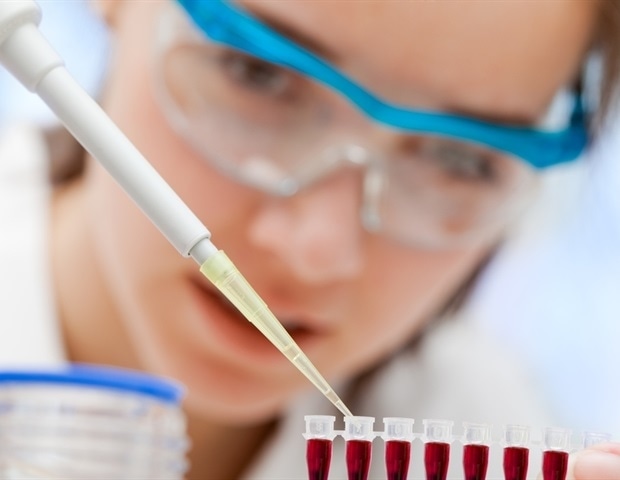New RNA-based blood test offers insight into cancer and tissue damage

Stanford Medicine researchers have developed a blood test capable of detecting cancers, the ways cancer resists treatments and tissue injury caused by non-cancerous conditions. The new test analyzes RNA molecules in the bloodstream. This type of RNA is called cell-free RNA because the tiny molecules no longer inhabit a cell. There are always fragments of both DNA and RNA floating in blood - byproducts of natural cell death from all types of tissues and organs throughout the body, including cancerous tumors. The researchers spent more than six years developing novel methods to target messenger RNA in blood and then used it to identify the presence of cancers at different stages, to track resistance to cancer treatment, and to monitor severity of injury to healthy tissue. Just as archeologists can learn about ancient societies by studying the garbage they left behind, we can learn a lot about what is going on in the cells of a patient's body based on the degraded RNA molecules that are cleared through the blood. We have developed a sensitive, versatile new type of liquid biopsy that measures cell-free and circulating-tumor RNA and has the potential to enhance personalized medicine in cancer and non-cancer diseases." Maximilian Diehn, MD, PhD, co-lead author and the Jack, Lulu, and Sam Willson Professor and a Stanford Medicine professor of radiation oncology A paper explaining the method and applications of the cell-free RNA blood test was published in Nature on April 16, 2025. Monica Nesselbush, a postdoctoral scholar at the Stanford Cancer Institute, Bogdan Luca, postdoctoral scholar in pathology, and Young-Jun Jeon, a former postdoctoral scholar at Stanford Medicine who is now a professor at Sungkyunkwan University, are joint first authors. Ash Alizadeh, MD, PhD, the Moghadam Family Professor and a professor of medicine, oncology and hematology, co-led the study with Diehn. Detecting cancers and resistance to treatment There is not a lot of cell-free RNA in the blood, and around 95% of it is the ribosomal RNA that makes up the cellular structures that manufacture proteins. The new blood test analyzes messenger RNA, which makes up less than 5% of the cell-free RNA pool, because these molecules serve as a signal about which genes are expressed as proteins. The researchers restricted their analysis of gene expression to a group of about 5,000 genes that are not typically expressed in the blood of healthy people. Focusing on these so-called rare abundance genes increased the ability of the test to correctly identify cancer by over a factor of 50. The test found lung cancer RNA in 73% of lung cancer patients, including at early stages. "Analysis of the rare abundance genes lets us focus on the most relevant subset of RNA for detecting disease, just like archaeologists who want to learn about what people ate might focus on a subset of artifacts such as food containers or utensils," Alizadeh said. Detecting cell-free messenger RNA means the blood test is capable of monitoring conditions that do not involve genetic mutations that are the basis of most DNA-based tests, such as certain causes of resistance to cancer treatments. "Unfortunately, a significant fraction of our patients who are being treated for cancer go on to have their therapy stop working, and that resistance is often based on adaptations that do not involve genetic changes, but instead altering how the cells behave or even how the cells look under a microscope," Alizadeh explained. "Our non-invasive approach has the potential of avoiding surgical biopsies and identifying these common types of resistance earlier before substantial disease burden shows up on scans or presents with symptoms like pain, providing an earlier opportunity to change treatment and improve outcomes." Finding a biomarker from what is in the freezer Before the research team could read information from cell-free messenger RNA in the blood, they had to overcome the influence of platelets, cells in the blood that are responsible for clotting and contain RNA but not DNA. To prevent platelets from affecting test results and obscuring signals from cancer, the researchers developed a combination of molecular and computational strategies that subtract contributions from these numerous cells. The computational approach to overcoming platelet contamination means the method works both on newly collected blood samples and on samples that have been previously collected and stored. "This approach means that the test can be used to examine blood samples currently in the freezer from a completed clinical trial, for example, and could help find a molecular signature that predicts who responded to a drug and who did not," Diehn said. "We can save time by using historical samples to discover a biomarker that can then be applied in real time to patients moving forward." Tip of the iceberg The new cell-free RNA method also provides useful information for non-cancer applications. The test detected high levels of normal lung RNA in blood samples from patients who were intubated and on a ventilator for treatment of acute respiratory distress syndrome, a condition that severely damages the lungs and causes the cells to die. The amount of normal lung RNA in blood samples from patients with COVID-19 reflected how sick they were. The researchers also found normal lung RNA in the blood of smokers who were healthy, possibly indicating microscopic injury to the lungs caused by smoking. Researchers from Massachusetts General Hospital, Harvard Medical School, Memorial Sloan Kettering Cancer Center, Fred Hutchinson Cancer Center, and the University of Washington also contributed to the study. The research was supported by the National Institutes of Health (grants R01 CA254179, R01 CA244526, R01 CA257655, R01 CA137008, R01 CA229766, T32 CA121940, T32 CA930240) National Science Foundation of Korea, Stand Up to Cancer Phil Sharpe Award, Tobacco-Related Disease Research Program, Virginia and D.K. Ludwig Fund for Cancer Research, Susan D. Wojcicki and Dennis Troper Family Foundations, and Lungstrong Foundation.


















